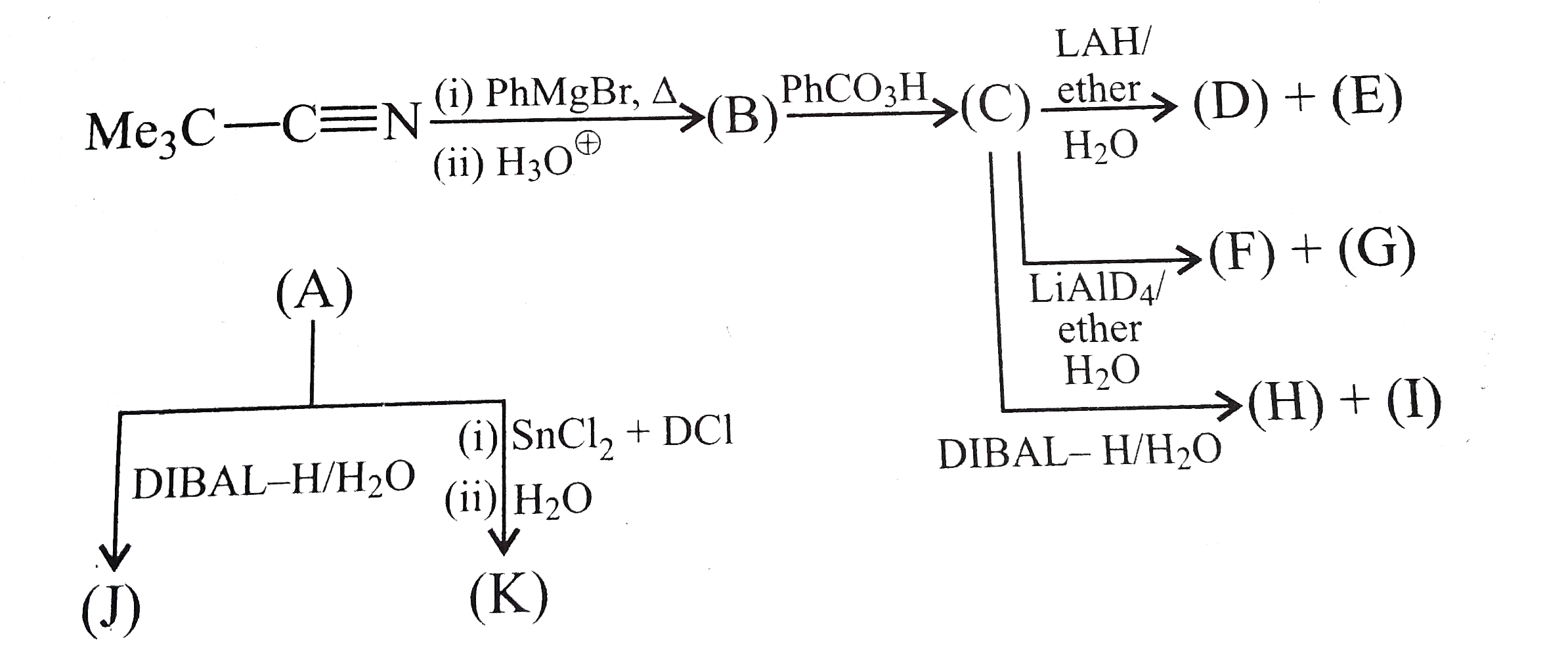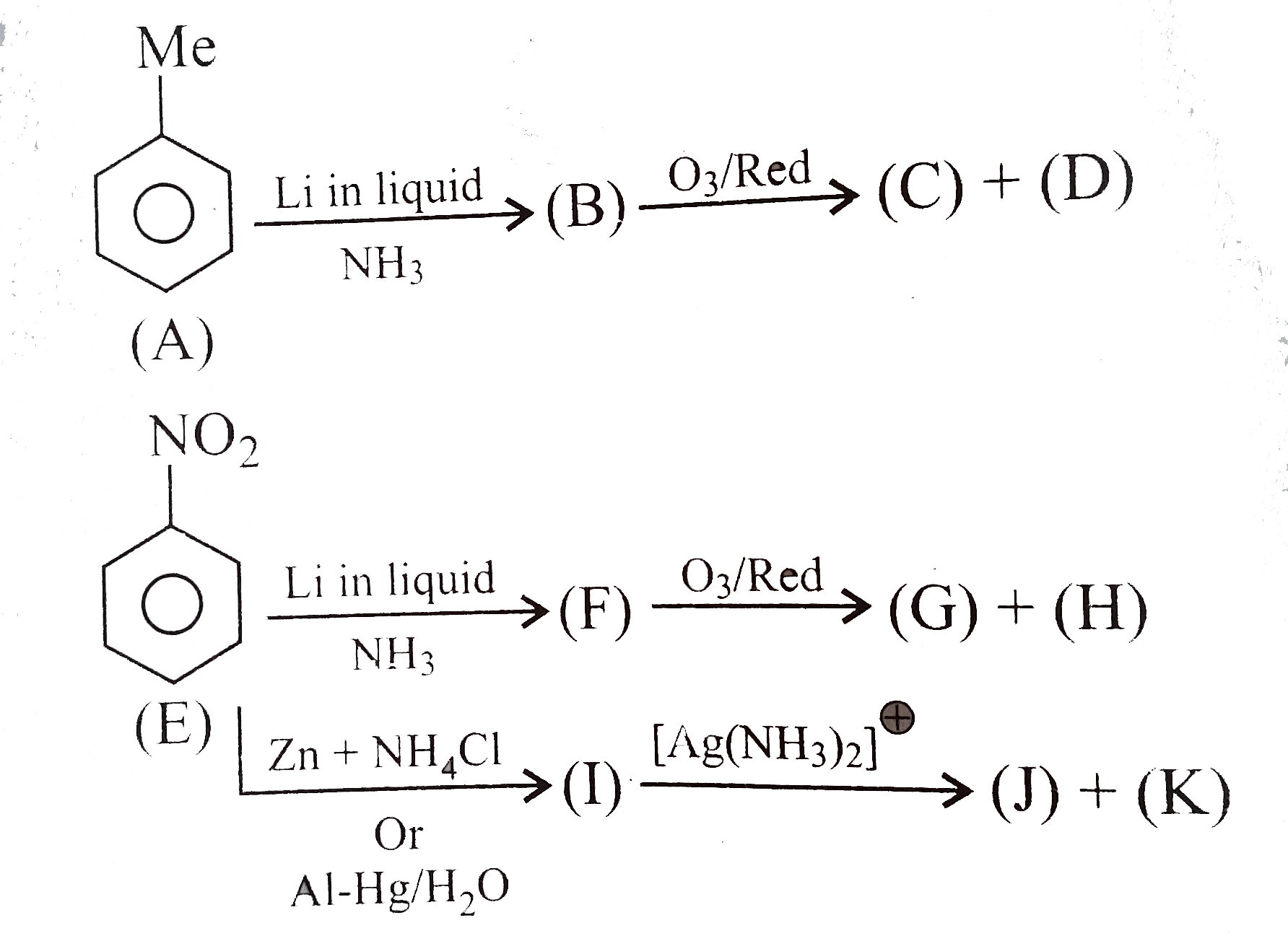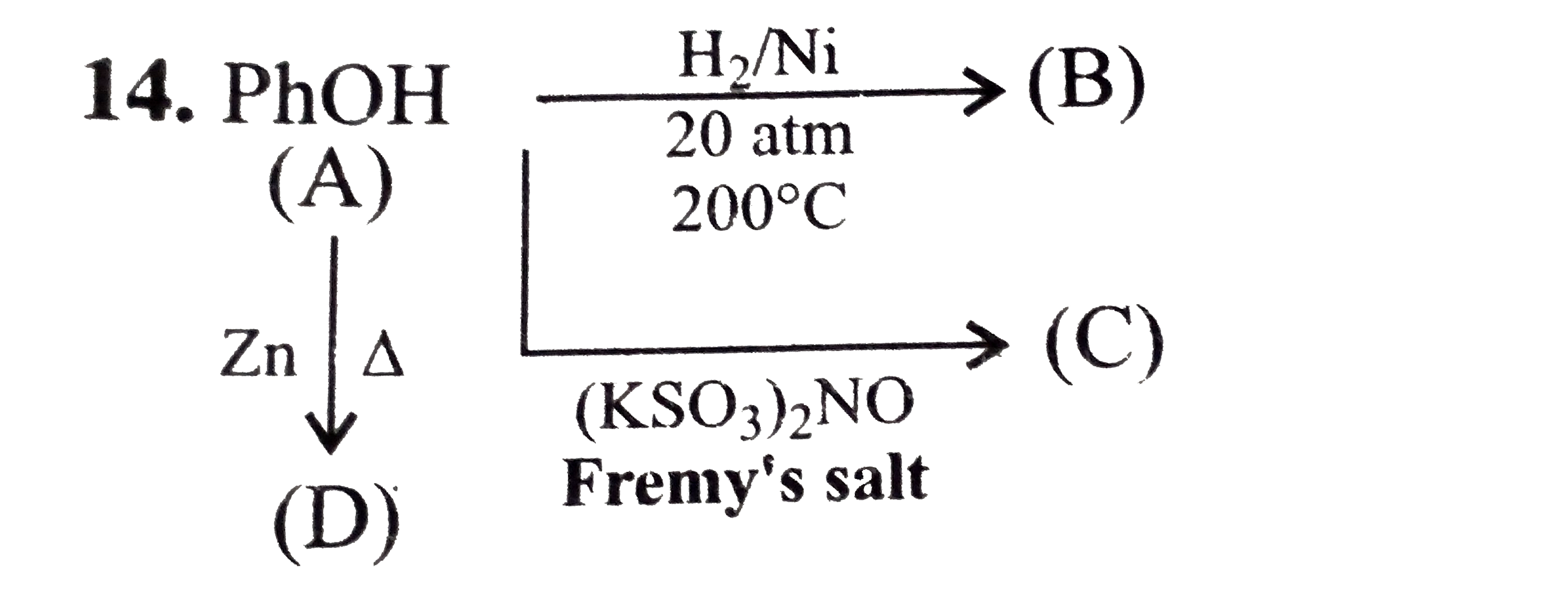
The compounds (D) and (E) respectively are:
a.PhOH+Me3C−CH2OH
b.PhCH2OH+Me3C−OH
c.PhOH+Me3C−CHO
d.PhCHO+Me3C−OH
The correct Answer is:B
Topper's Solved these Questions
- REDUCTION AND OXIDATION REACTION OF ORGANIC COMPOUNDSBOOK - CENGAGE CHEMISTRY ENGLISHCHAPTER - REDUCTION AND OXIDATION REACTION OF ORGANIC COMPOUNDSEXERCISE - Exercise (Multiple Correct)
35 Videos
- REDUCTION AND OXIDATION REACTION OF ORGANIC COMPOUNDSBOOK - CENGAGE CHEMISTRY ENGLISHCHAPTER - REDUCTION AND OXIDATION REACTION OF ORGANIC COMPOUNDSEXERCISE - Exercise (Single Correct)
90 Videos
- REDUCTION AND OXIDATION REACTION OF ORGANIC COMPOUNDSBOOK - CENGAGE CHEMISTRY ENGLISHCHAPTER - REDUCTION AND OXIDATION REACTION OF ORGANIC COMPOUNDSEXERCISE - EXERCISES
1 Videos
- QUALITATIVE INORGANIC SALT ANALYSISBOOK - CENGAGE CHEMISTRY ENGLISHCHAPTER - QUALITATIVE INORGANIC SALT ANALYSISEXERCISE - Viva Voce Questions And Part-C (Analysis Of Cations)
42 Videos
- SOLID STATEBOOK - CENGAGE CHEMISTRY ENGLISHCHAPTER - SOLID STATEEXERCISE - Ex 1.2 (Objective)
9 Videos
Similar Questions

The compound (C ) and (D), respectively, are:
View SolutionOne mole of each of a bromo derivative (A) and NH3, react to give one mole of an organic compound (B). (B) reacts with CH3I to give (C). Both (B) and (C) react with HNO2 to give compounds (D) and (E) respectively. (D) on oxidation and subsequent decarboxylation gives 2-methoxy-2-methylpropane. Give structures of (A) to (E) with proper reasoning.
View SolutionOne mole of each of a bromo derivative (A) and NH3, react to give one mole of an organic compound (B). (B) reacts with CH3I to give (C). Both (B) and (C) react with HNO2 to give compounds (D) and (E) respectively. (D) on oxidation and subsequent decarboxylation gives 2-methoxy-2-methylpropane. Give structures of (A) to (E) with proper reasoning.
View Solution
Compound (B) and (D) are, respectively :
View Solution
The compounds (B), (C ), (D), respectively are:
View Solution
Compound (C ) and (D) are respectively
View Solution(A)+NaCl→(B) (white ppt.)
(B)+Ki→(C) (green ppt).
(C)+KI(excess)→(D)+(E) (colourless solution)
(E)+NH3+KOH→(F)
Q. Compounds (A) and (B) are respectively:
View Solution
Compound (A),(B) and(E ) are respectively
View SolutionIn the figure of previous problem, D and E respectively represent
View SolutionIn ABC, D and E are the mid-points of AB and AC respectively. Find the ratio of the areas of ADE and ABC .
View Solution

